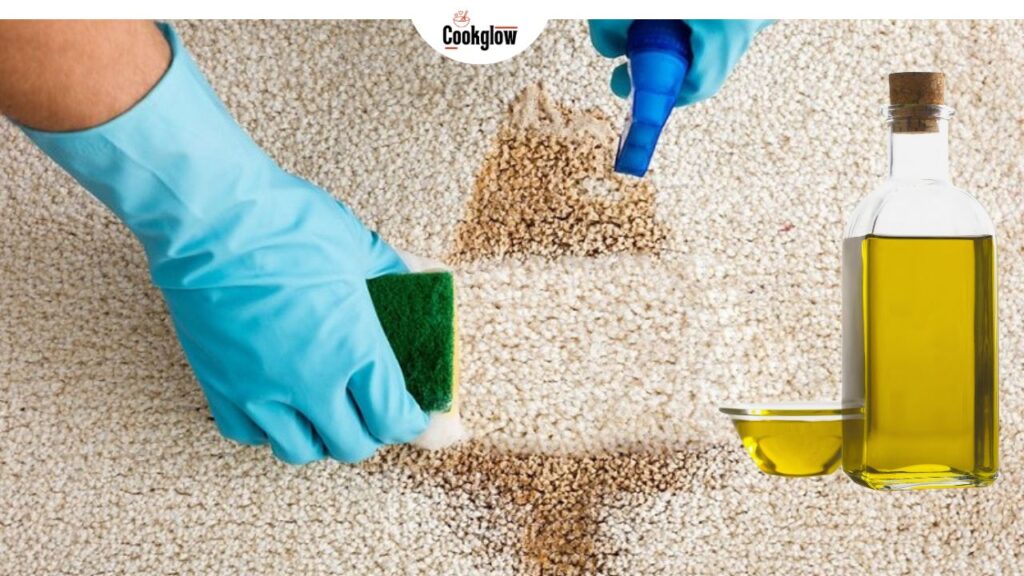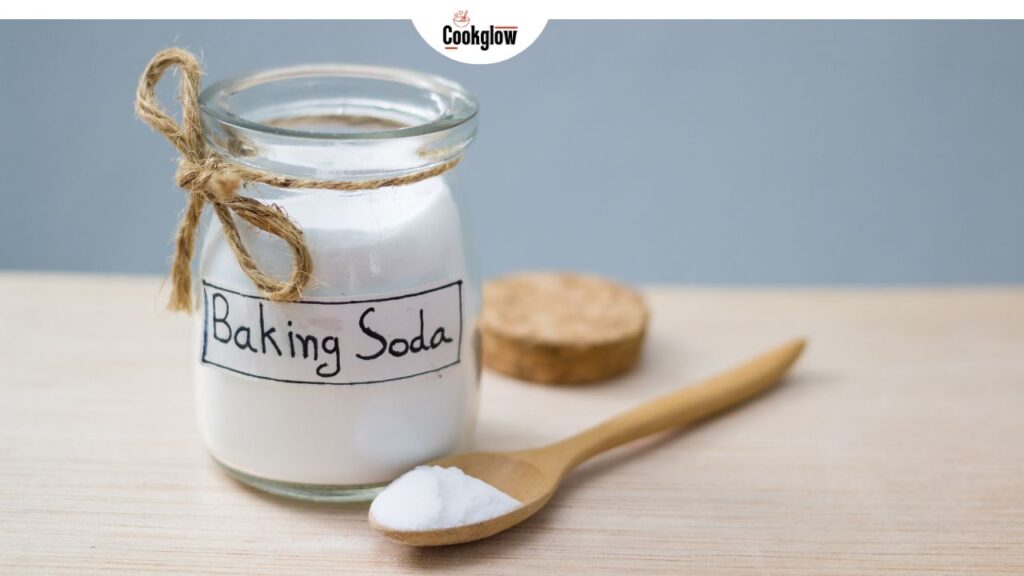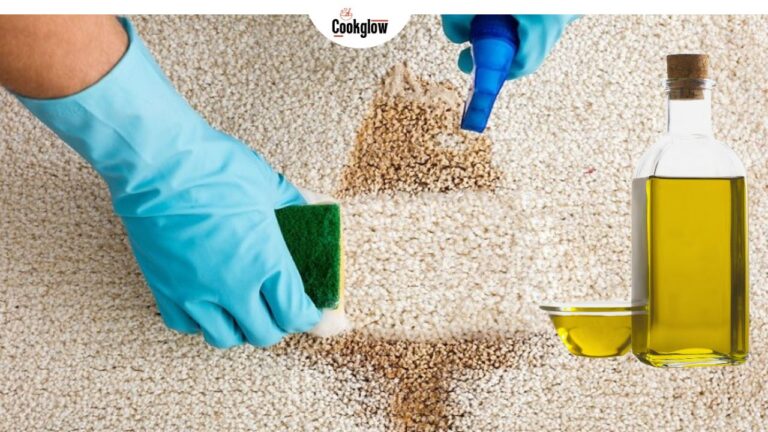
Oh no! You’ve just knocked over that bottle of cooking oil, and now there’s a greasy stain spreading across your beloved carpet. I get it—panic mode activated! But don’t worry, I’ve been there too, and I know just how overwhelming it can feel. The good news? You’re not stuck with that stubborn stain forever.
Whether it’s olive oil from a kitchen mishap or vegetable oil from your latest cooking experiment, I’m here to guide you through getting that pesky oil out of your carpet. With a little patience and some tried-and-true techniques, you’ll be amazed at how easy it is to restore your carpet to its former glory.
Let’s learn how to get cooking oil out of carpet for quick stain removal. for removing cooking oil stains from carpets, plus some handy tips to prevent future messes. So, take a deep breath, grab your cleaning supplies, and let’s tackle that greasy disaster together!
Contents
- 1 Immediate Action After the Spill
- 2 Home Remedies for Cooking Oil Stains on Carpet
- 3 Comparing the effectiveness of each remedy:
- 4 Commercial Carpet Cleaners: Pros and Cons
- 5 Professional Carpet Cleaning Services
- 6 Comparing DIY cleaning vs. professional cleaning services:
- 7 Prevention Tips: How to Avoid Oil Spills in the Future
- 8 Conclusion
- 9 FAQs
Immediate Action After the Spill
When it comes to removing cooking oil from carpet, speed is of the essence. The quicker you act, the better your chances of preventing that oil from sinking deep into the fibers. Here’s what to do right away:
Step 1: Blot, Don’t Rub
I know, it’s tempting to start scrubbing away the oil, but trust me—rubbing makes things worse. Scrubbing can push the oil deeper into the fibers, making the stain even harder to remove. Instead, gently blot the spill with a clean cloth or paper towel. Press down to soak up as much oil as possible. It’s like using a sponge to absorb a spill!
Step 2: Use Absorbent Materials
Once you’ve blotted as much oil as you can, it’s time to use absorbent materials like baking soda, cornstarch, or even baby powder. These ingredients work wonders by absorbing the excess oil that’s still in the carpet. Just sprinkle a generous amount over the stain and let it sit for about 10-15 minutes. After that, vacuum it up.
Step 3: Avoid Hot Water or Scrubbing
I’ve made the mistake of thinking hot water would work magic, but it actually sets the stain instead of removing it. Stick to cold or lukewarm water for any cleaning process. And remember, no scrubbing! Gently blot again if needed. This helps prevent the stain from spreading or setting further.
Home Remedies for Cooking Oil Stains on Carpet
Okay, now that we’ve taken care of the initial steps, let’s dive into some easy, at-home remedies. These ingredients are probably already in your kitchen, and they’ll save the day!

Baking Soda
Baking soda is a superhero when it comes to tackling greasy stains. Here’s what you do:
- After blotting the spill and using absorbent materials, sprinkle a generous amount of baking soda over the stain.
- Let it sit for 30 minutes, then vacuum it up. If there’s still an oily residue, repeat the process.
Baking soda helps lift the grease from the fibers, and it’s also great at deodorizing!
Cornstarch
Similar to baking soda, cornstarch can absorb the oil effectively. The method is almost the same:
- Sprinkle cornstarch directly onto the stain.
- Let it sit for about 15 minutes, and then vacuum it up.
- For stubborn stains, repeat the process until the stain is completely gone.
Dish Soap and Vinegar Solution
A classic combo for a reason! If the stain is still there, you can mix a tablespoon of dish soap with two cups of warm water and add a bit of white vinegar.
- Apply this mixture with a clean cloth to the stain and gently blot it.
- Keep blotting until the stain lifts, and then rinse with cold water.
Dish soap cuts through grease, while vinegar helps break down the oil even further. You’ll be amazed at how well this works.
Comparing the effectiveness of each remedy:
| Remedy | Effectiveness | When to Use | Steps Required | Time to Wait |
| Baking Soda | Excellent | Light to moderate stains | Sprinkle & vacuum | 30 mins |
| Cornstarch | Good | Light to moderate stains | Sprinkle & vacuum | 15 mins |
| Dish Soap + Vinegar | Very good | Tough, greasy stains | Apply, blot, rinse | 15-20 mins |
Commercial Carpet Cleaners: Pros and Cons
While home remedies work wonders, sometimes you just need a bit of extra power to tackle a tough oil stain. That’s where commercial carpet cleaners come in.
When to Choose Commercial Cleaners
If the stain is really stubborn or large, commercial cleaners can be a game-changer. They’re designed to break down tough stains like cooking oil, and many are specifically formulated for greasy messes.
Popular Commercial Products
Here are a few of my go-to products:
- Resolve Carpet Cleaner: A well-known stain remover that works on various stains, including oil.
- Zep Heavy-Duty Carpet Cleaner: Great for removing greasy spots and deep stains.
- Rug Doctor: Their cleaner is known for lifting oils and greases from carpets effectively.
| Product | Effectiveness | Best For | Approximate Cost |
| Resolve Carpet Cleaner | Very good | Light to medium stains | $6-10 |
| Zep Heavy-Duty Cleaner | Excellent | Heavy grease stains | $12-15 |
| Rug Doctor Cleaner | Very good | Deep and tough stains | $20-25 |
Professional Carpet Cleaning Services
Sometimes, no matter how many remedies or DIY techniques you try, some stains just won’t budge. In these cases, it might be time to call in the pros. Professional carpet cleaning services have access to industrial-grade equipment and cleaners that can tackle even the toughest stains, including cooking oil.

When to Call a Professional
If the stain is large, deeply ingrained, or if you’ve tried everything and the stain persists, professional help may be the best option. They have the experience and tools to do a thorough job and ensure the longevity of your carpet.
What to Expect From a Professional Service
- Pre-treatment: They may apply a special solution to break down the grease before deep cleaning.
- Hot water extraction: This method uses hot water and high pressure to lift stains and remove dirt from deep within the fibers.
- Drying: After cleaning, they will use powerful fans to dry the carpet thoroughly, preventing mold or mildew.
It’s always a good idea to check online reviews and get recommendations before choosing a professional carpet cleaning service. Look for companies with a reputation for being trusted and effective.
Comparing DIY cleaning vs. professional cleaning services:
| Method | Cost Range | Effectiveness | Time Required | Difficulty |
| DIY (Home Remedies) | Free to Low | Good for light stains | 10-30 mins | Easy |
| Commercial Cleaners | $5-$25 per bottle | Good to Excellent | 15-45 mins | Medium |
| Professional Cleaning | $100-$300+ | Excellent for stubborn stains | 1-3 hours | Hard |
Prevention Tips: How to Avoid Oil Spills in the Future
Now that we’ve covered how to deal with a cooking oil spill, let’s talk about prevention. A little preparation can go a long way in keeping your carpet spotless and oil-free.
Use Carpet Protectors
If you have a high-traffic area or tend to cook near the carpet, consider investing in protective mats or rugs. These can catch spills before they even reach your carpet.
Move Away From the Carpet
Try setting up your cooking station away from the carpet, or use a spill-proof mat underneath your cooking area. Even just a few feet of distance can save your carpet from accidental spills.
Clean Up Immediately
Just like we did with the first step after a spill, remember that quick action is key. The quicker you can blot the oil, the easier it will be to clean up later.
Conclusion
Dealing with a cooking oil spill on your carpet may seem like a daunting task, but with the right approach and tools, it’s completely manageable. Whether you choose DIY methods like baking soda, cornstarch, and dish soap or opt for commercial cleaners or professional help, the most important step is to act quickly.
Remember, the key to successful stain removal is blotting, avoiding scrubbing, and using the right cleaning agents. So, don’t stress—you’ve got this! With these tips in hand, you’ll be able to handle any cooking oil mishap without a hitch. And next time, you’ll know exactly how to prevent it from happening in the first place!
FAQs
1. What’s the quickest way to get cooking oil out of carpet?
The quickest method is to blot the oil immediately with a clean cloth or paper towel. Then, sprinkle an absorbent material like baking soda or cornstarch to lift the oil before vacuuming it up. This quick action can prevent the oil from setting into the carpet fibers.
2. Can I use dish soap to clean cooking oil from my carpet?
Yes! Dish soap is a great option because it’s designed to cut through grease. Mix a small amount of dish soap with warm water, apply it to the stain, and blot it gently until the stain lifts. Follow up with cold water to rinse.
3. Is cornstarch effective for removing oil stains?
Yes, cornstarch is a highly effective absorbent material that can help lift the oil out of your carpet. After applying it, let it sit for 15-20 minutes, then vacuum it up. Repeat if necessary for tougher stains.
4. When should I call a professional carpet cleaner?
If the stain is large, stubborn, or has been sitting for a while, it may be best to call a professional carpet cleaner. They have industrial equipment and expertise to effectively remove deep stains without damaging your carpet.
5. Can I prevent cooking oil spills on my carpet?
You can reduce the risk of spills by using protective mats, cooking in areas away from the carpet, and cleaning up spills immediately. Quick action is key to preventing lasting stains!

